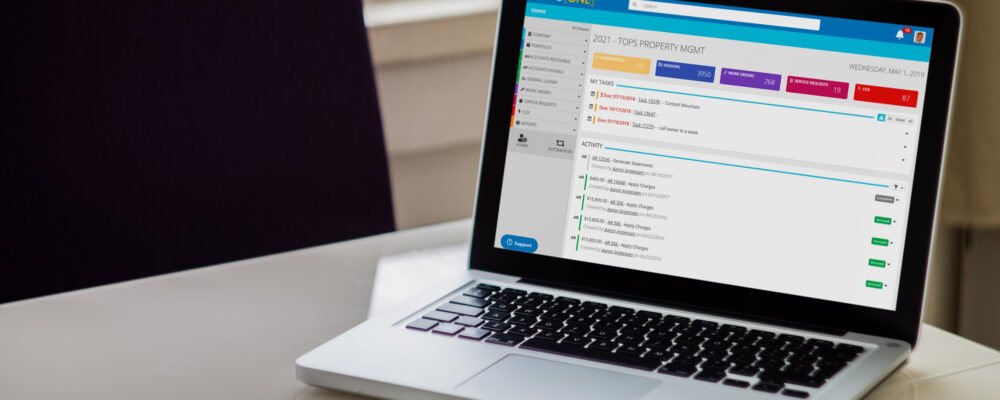I’m a firm believer in the value of certifications. A certification gives you a common foundation of knowledge and expertise in a given area. A certification announces to the world that you have acquired that knowledge, and are qualified to speak – and act in that area. A certification provides a layer of protection between you and the naysayers that question your credibility.
I have spent the past 16 years writing about, studying and working among community association managers. I’ve been a homeowner, a committee member and a board member, but never managed a community association. So seeking certification in the industry seemed a natural move for me from both a personal and professional perspective.
Making the decision to seek out industry certification was the first step. The next was to decide which one(s) I wanted to go for. Many states have certifications that are targeted to the laws of that state, so when you choose, select one that will be most relevant to your state. Florida has a CAM license, but since I write to CAMs around the country I wanted a broader perspective. I decided to go through CAI’s certification track, which is applicable pretty much everywhere.
Once I decided on the designation I wanted to go for, my next obstacle was time management, as I do have a full time job and a life (as many of you seeking this designation will have as well). I’ll give you approximate times I worked at each section.
The M-100
CAI has a comprehensive certification track that culminates in the prestigious PCAM designation.
But we all have to begin with a foundation and that means taking the M-100 class.
While the M-100 class (and electronic manual) is available online, I opted to take mine in a classroom setting at the CAI National conference.
The M-100 is a very comprehensive class. The manual alone is a whopping 440 pages, chock full of intensive training material. Just getting a printed copy of the manual alone would have made the classroom experience more valuable than the online version (I shudder to think of my poor printer churning out all those pages!) But the manual was just the beginning.
My class was taught by Mr. Lincoln Hobbs, esq, a lawyer who specializes in community association law. Besides the class material, the many anecdotes and examples he was able to give helped with difficult concepts. He opened the class saying, “Every association thinks that they are your only client.” which caused a knowing laugh and set the tone for the entire session.
Another great thing about taking the class in a classroom were the other people attending the class. We were an eclectic mix of managers and CAM professionals from all over the country. We were able to bounce ideas off each other, share stories, and ask probing questions that we all learned from. The diversity of the class meant that we all had unique perspectives on laws and practices affecting the industry. I learned so much more than just the sterile course material I would have gotten online. If you have a chance to take your M-100 this way, I highly recommend it.
When the class was over, we took a short test to measure our comprehension. I was nervous but many of the managers I talked to assured me that the M-100’s test has a high pass rate and is relatively easy as long as you paid attention in class. The test was the following day, so there wasn’t a lot of time to study. I do recommend taking the practice quizzes that are included at the end of each chapter.
The class costs $445 for members of CAI, and if you take it in a classroom at an industry event as I did, you’ll likely need to pay for admission to the event as well. The class itself was 2 (full) days and the test was given on the morning of the third day.
I did pass the M-100 test. But passing is just phase one. It doesn’t give any alphabet soup after your name. If you want an industry designation, you have to move on to the next step, the CMCA.
The CMCA
The CMCA’s prerequisite is passing the M-100 test, so there are no classes to take between tests. However, I will pass on advice I got from 4 different PCAM’s on this – make sure you schedule your CMCA exam as soon as possible after your M-100, while the information is still fresh in your mind. You will need every advantage you can get because, unlike the M-100 test, the CMCA exam has a 50% fail rate. (I have no data to corroborate this figure, but I heard it from multiple sources.)
The CMCA is maintained by the CAMICB (Community Association Managers International Certification Board) so I went to their website to register for the test. The test costs $300 to take, and that gives you one shot. If you fail, you have to pay another $300 to take it again. I registered (and paid for) the test on CAMICB’s website, then it was ‘hurry up and wait’. Turns out the CAMICB needs to verify your qualifications to take the test before they will actually approve you to take it. After several weeks I finally got my approval code. The day I got the code I was so excited I went online immediately to schedule my test.
The testing is conducted at independent testing facilities where many different kinds of certification tests for other industries are conducted as well. The great thing about that is there are testing centers literally everywhere. I was able to find 3 testing centers within a few minutes’ drive. I selected one and set up the test date. There were a number of dates and times to choose from, so setting a date was entirely at my convenience. I chose a date 2 months out so I would have plenty of time to study before I took the test.
Study Time
With a high fail rate and the expense to take the test, I knew I needed to study my bum off. And I did. First I looked online for available study materials. The CAMICB provides a study guide, but it mostly consists of long lists of terms and skills. I found that the M-100 manual was actually a lot easier to study from than the official study guide. The manual includes lists of key terms, focus questions and short quizzes at the end of every section, so it’s a perfect (albeit large) study companion. I also made flash cards of all the terms and definitions, and tortured my family by making them quiz me in the weeks leading to the test.
I studied in the evenings and on weekends – probably about 4 to 6 hours per week, and then double that the final week before the test. This study schedule to me was no more onerous than taking a class at the local community college. In fact, I probably over-studied, but did I mention the 50% failure rate? I really wanted to pass.
If you’re working toward your CMCA today, you’re in an even better position than I was just a couple of months ago. CAMICB recently added an online practice exam you can take for just $25. You have to have a valid PIN code to take it so I wasn’t able to test it out for you, but it sounds like it’s comprised of questions that were formerly on the test and have since been cycled out, so it should give you a really good understanding of the formatting of the test itself. If it had been available when I was studying I certainly would have taken advantage of it.
Test Day
When the day of the test dawned, I was nervous but ready. I drove to the testing center. This test is serious business, and the testing center treats it so. After being directed to lock all my worldly possessions in a locker, I was fingerprinted, ID’d and checked for smuggled paraphernalia. Finally, I was given a laminated card and pen to make notes and escorted into the testing center.
It’s against the rules to share any details about the test so I can’t tell you what’s on it. But I can tell you that the test itself is not unlike a bigger version of the M-100 test. Like any good test, there are false turns and trick questions, but as long as you’ve studied, you’ll be fine. You’re allotted 2 1/2 hours for the test, but it only took me about an hour to take, with another 15 minutes to check my answers twice. Once I was satisfied, I submitted my answers and was escorted out of the testing center. They had my score immediately, so there were no pins and needles to sit on.
And I passed! (Whew)
About a week later, I received a welcome package from the CAMICB with my CMCA certificate and a few lovely gifts with the CMCA logo. CAMICB also gives some resources to help you promote your new CMCA to your clients and the world. They don’t give you anything you can use to brag to your coworkers about your accomplishment, but I found I was able to do that pretty well on my own.
With your certification in hand you’ve now got some alphabet soup you can add to the end of your name. Don’t do what I did and forget to update your LinkedIn profile and email signatures with your new designation!
The Bottom Line
All told, I spent a little over a thousand dollars between the class and testing fees, study materials and event registration.
At the bare minimum you’re looking at $745 for the M-100 and CMCA testing fee.
Time wise, I took the M-100 class April 27th and got my CMCA on August 10th, so the whole process took less than 4 months. I probably could have stepped that up even faster if I hadn’t scheduled my test 2 months out.
Bottom line: This is doable, affordable and not beyond any manager I know. So why not start out the New Year for your path for self-development, maybe a better job? Show your clients, your boss and yourself that you are serious about the industry and your career, and plot your course to a PCAM. These designations do make a difference!
Need help planning your own certification journey to help you get a new/better job? Reach out to Julie at Adamen Inc. – she is a huge advocate of leveraging certifications to further your career.
Enumerate’s community association and HOA software can help you to eliminate many of your regular administrative tasks and save time. Watch a demo or reach out to a Sales Representative.







